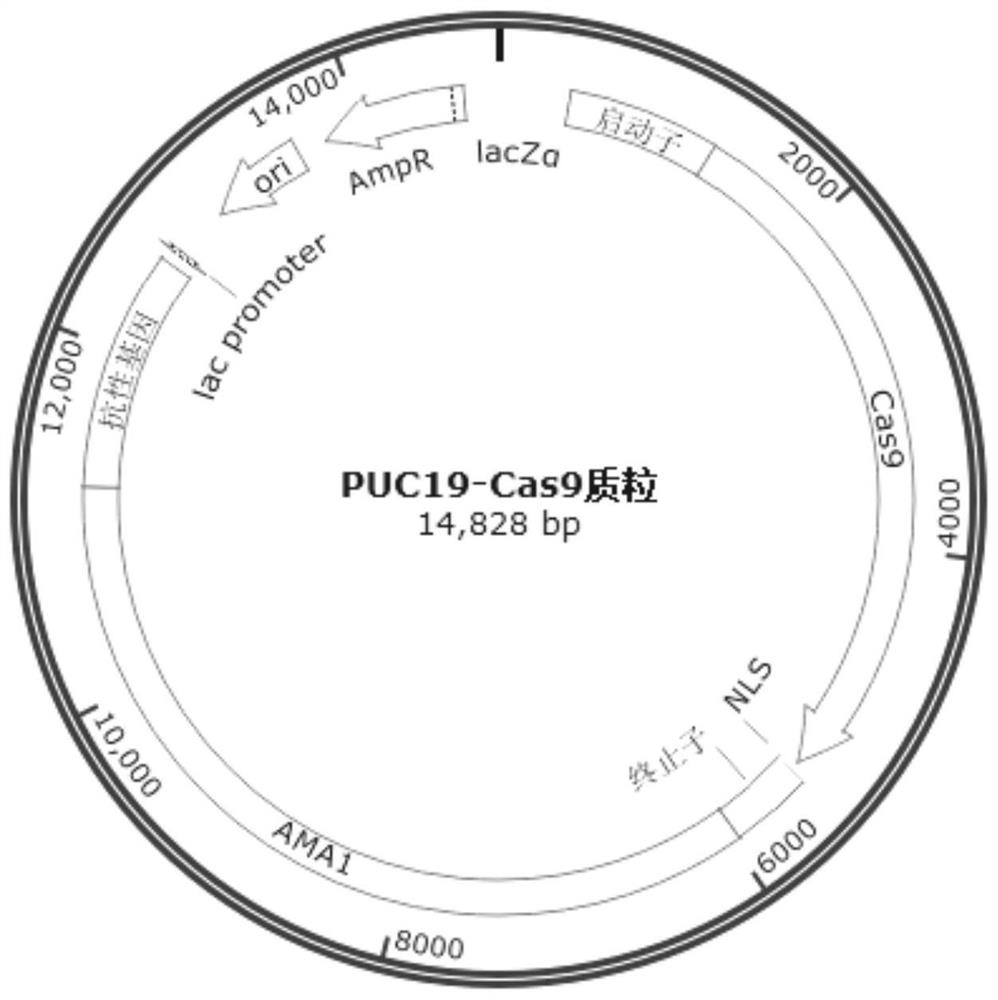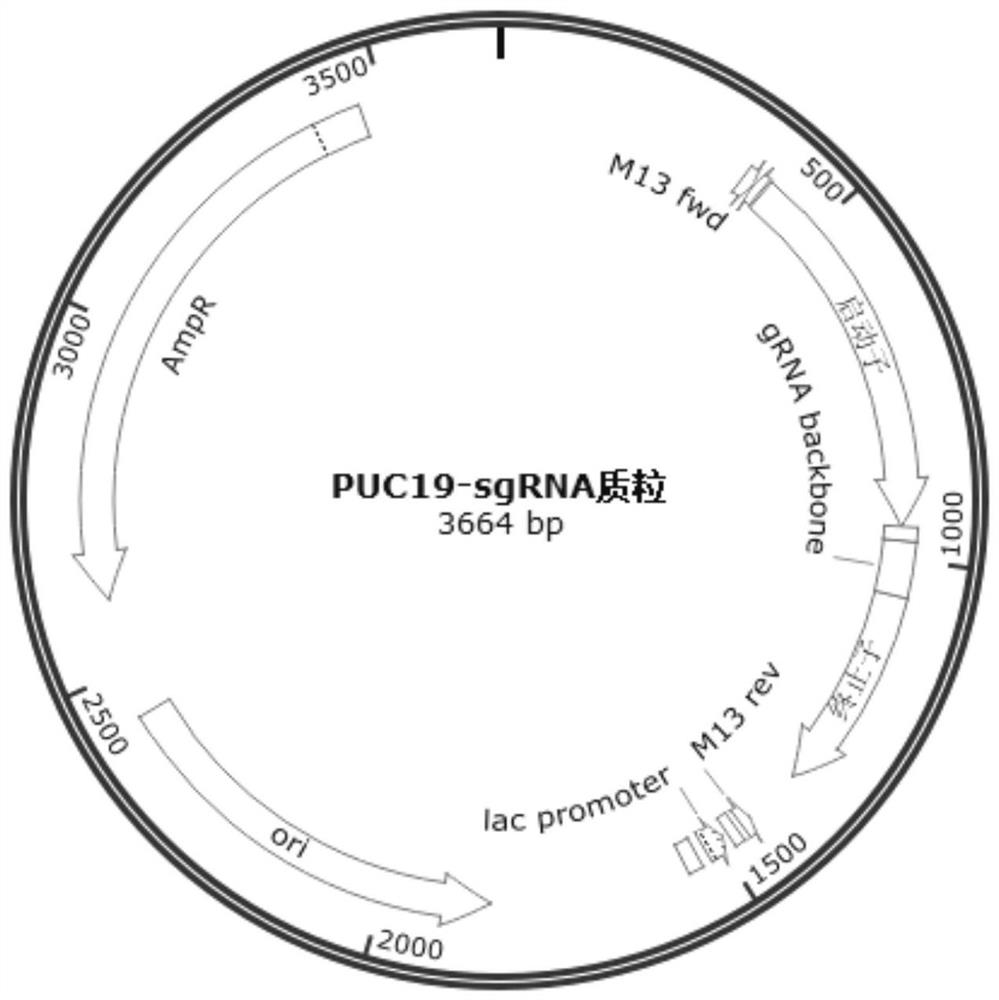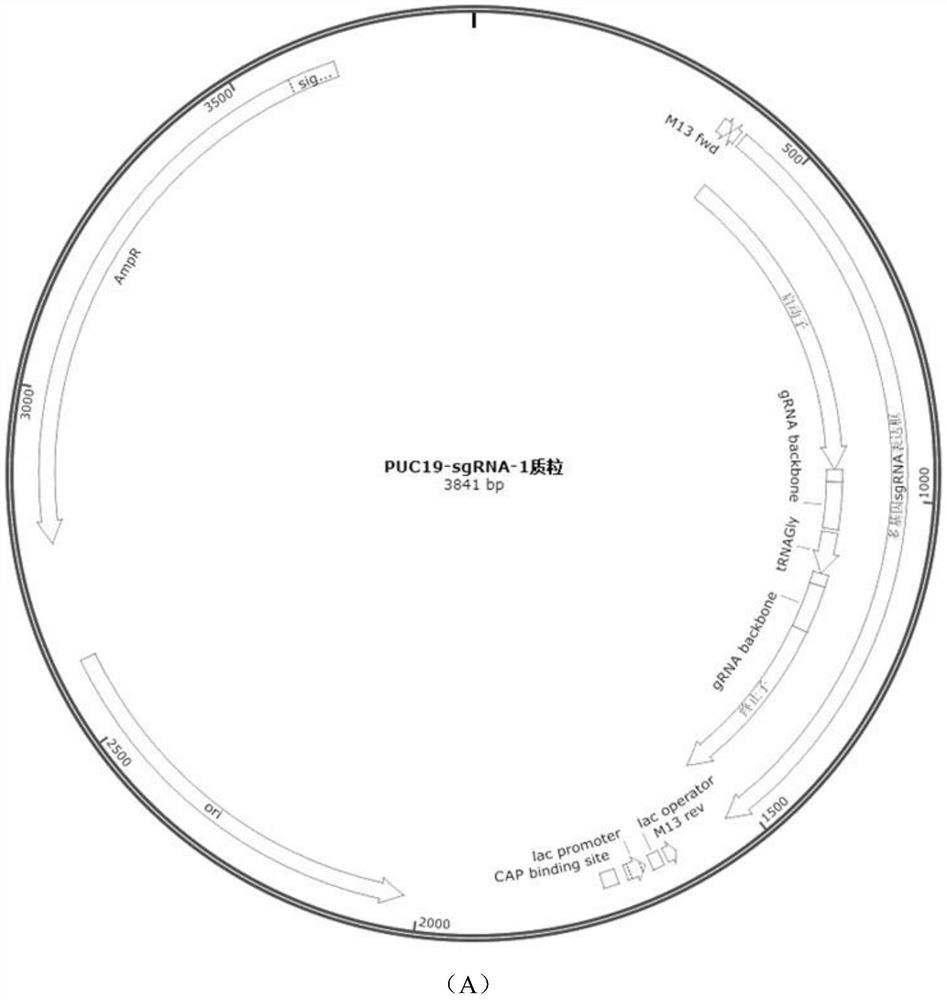Visual screening method of multi-target editing recombinant aspergillus strain
An Aspergillus and strain technology, applied in the field of genetic engineering, can solve the problems of limited selection markers and low homologous recombination efficiency, and achieve the effect of reducing the use of resistance genes and accurately knocking out
- Summary
- Abstract
- Description
- Claims
- Application Information
AI Technical Summary
Problems solved by technology
Method used
Image
Examples
Embodiment 1
[0045] Example 1: Using CRISPR-Cas9 to construct a single gene edited recombinant strain of Aspergillus niger
[0046] The CRISPR-Cas9 system includes a gene encoding the Cas9 protein (Cas9 gene), sgRNA, and a selection marker.
[0047] (1) Construction of Cas9 expression vector
[0048] Utilize Aspergillus promoter PglaA (nucleotide sequence as shown in SEQ ID NO.7) or Ptef1 (nucleotide sequence as shown in SEQ ID NO.6) etc. Aspergillus strong promoter expression Cas9 protein (nucleotide sequence is as shown in SEQ ID NO.6) shown in ID NO.1).
[0049] Using Vazyme II One Step Cloning Kit, using pUC19 as the vector backbone, the Aspergillus promoter sequence, gene sequence encoding Cas9 protein, resistance gene and AMA1 (GenBank: X78051.1) sequence were synthesized twice by homologous recombination to obtain Cas9 expression Plasmid pUC19-Cas9 (see the plasmid map figure 1 ). Wherein, a nuclear localization signal NLS sequence (CCCAAGAAGAAGCGCAAGGTC) is added to the N-ter...
Embodiment 2
[0062] Example 2: Screening of Aspergillus niger visualized dual-targeted gene editing recombinant strains
[0063] (1) Construction of Cas9 expression vector
[0064] For specific embodiments, refer to step (1) of Example 1.
[0065] (2) Construction of sgRNA expression cassette
[0066] Utilize the Pu3 mutant promoter (in order to facilitate the assembly of multiple sgRNAs, the associated BsaI site is mutated to facilitate subsequent assembly, specifically the BsaI of the Pu3 promoter sequence with the nucleotide sequence as shown in SEQ ID NO.2
[0067] (GAGACC) site mutation to ACCCAC), target gene protospacers sequence pptA, fwnA, brnA (see Table 1), amyA sequence in Table 5, using tRNA Gly Release the sgRNA expression cassette, the gRNA backbone sequence (the nucleotide sequence is shown in SEQ ID NO.8), and the terminator Tu3 (the nucleotide sequence is shown in SEQ ID NO.4) to construct the sgRNA expression cassette.
[0068] Table 5 Sequence list of target gene pro...
Embodiment 3
[0079] Example 3: Screening of Aspergillus niger visualized multi-targeted gene editing recombinant strains
[0080] For specific embodiments, see Example 2, the difference is that the tRNA behind the promoter in Example 2 Gly replace with tRNA Ala , the second tRNA is replaced by tRNA Phe ;
[0081] Utilize tRNA Ala and tRNA Phe Linked to different sgRNAs. One visualized gene sgRNA expression cassette is fwnA-sgRNA expression cassette, and the other non-phenotype gene sgRNA expression cassette is amyA-sgRNA expression cassette (see plasmid map image 3 ).
[0082]Using the spore color of the Aspergillus niger CCTCC M 2018881 strain as a control, observe the changes in the color phenotype of Aspergillus niger spores after transformation. After knocking out fwnA, the spore color changes from black to white, and 36% of the transformants are white phenotypes, which are directly selected These white single colonies increased the positive selection rate of multiple gene edit...
PUM
 Login to View More
Login to View More Abstract
Description
Claims
Application Information
 Login to View More
Login to View More - R&D
- Intellectual Property
- Life Sciences
- Materials
- Tech Scout
- Unparalleled Data Quality
- Higher Quality Content
- 60% Fewer Hallucinations
Browse by: Latest US Patents, China's latest patents, Technical Efficacy Thesaurus, Application Domain, Technology Topic, Popular Technical Reports.
© 2025 PatSnap. All rights reserved.Legal|Privacy policy|Modern Slavery Act Transparency Statement|Sitemap|About US| Contact US: help@patsnap.com



